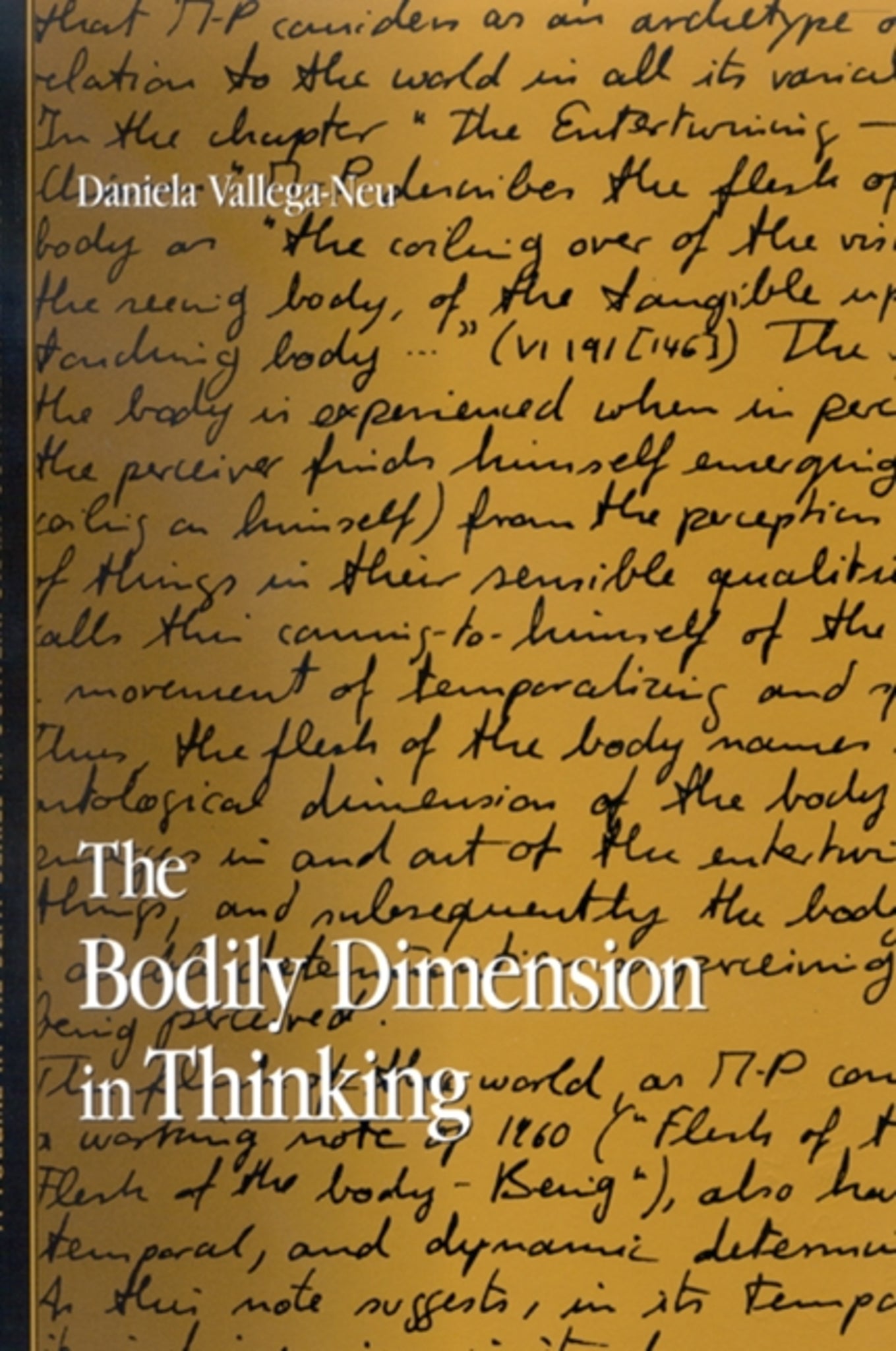We're sorry. An error has occurred
Please cancel or retry.
The Bodily Dimension in Thinking

Some error occured while loading the Quick View. Please close the Quick View and try reloading the page.
Couldn't load pickup availability
- Format:
-
01 June 2006

An ontology of bodily being featuring Plato, Nietzsche, Scheler, Merleau-Ponty, Heidegger, and Foucault.
Daniela Vallega-Neu questions the ontological meaning of body and thinking by carefully taking into account how we come to experience thought bodily. She engages six prominent figures of the Western philosophical tradition-Plato, Nietzsche, Scheler, Merleau-Ponty, Heidegger, and Foucault-and considers how they understand thinking to occur in relation to the body as well as how their thinking is itself bodily. Through a deconstructive and performative reading, she explores how their thinking reveals a bodily dimension that is prior to what classical metaphysics comes to conceive as mind-body duality. Thus, Vallega-Neu uncovers the bodily dimension that sustains their thought and their work. As she contends, the trace of the body in our thought not only exposes the strangers we are to ourselves, but may also lead to a new understanding of how we come to be who we are in relation to the world we live in.


Introduction
Part One. At the Limits of Metaphysics
1. On the Origin of the Difference of Psyche and Soma in Plato’s Timaeus
a. The Broken Frame of Timaeus’ Speech2. The Return of the Body in Exile: Nietzsche
b. The Demiurge and the "Nurse of all Becoming"
c. The Creation of the Psyche of the Cosmos
d. Human Legein
e. The Genesis of Sameness in an Eternal Return
f. Conclusion
a. Overturning PlatonismPart Two. At the Limits of Phenomenology: Two Phenomenological Accounts of the Body
b. The Trace of the Body
c. The Historicality of Nietzsche’s Thought
d. Transformations of Bodies
e. Conclusion
3. Driven Spirit: The Body in Max Scheler’s Phenomenology
a. The Phenomenological Attitude4. Thinking in the Flesh: Merleau-Ponty’s The Visible and the Invisible
b. The Lived Body as Analyser of Inner and Outer Perception
c. Spirit and Life
d. The Mutual Penetration of Life and Spirit
e. Conclusion
a. Re-flecting Primitive BeingPart Three. Exposed Bodies
b. The Archetype of Perception: Body and Things
c. Recoiling Flesh and the Genesis of Perception
d. The Negative Opening of Intercorporeal Being
e. The Invisible: Ideas of the Flesh
f. Conclusion
5. Bodily Being-T/here: The Question of Body in the Horizon of Heidegger’s Contributions to Philosophy
I. BEING AND BEINGS6. Exorbitant Gazes: On Foucault’s Genealogies of Bodies
a. From the Thinking of Being and Time to that of ContributionsII. BEING AND BODY
b. Thinking Be-ing in Reservedness
c. Sheltering the Truth of Be-ing in Beings
a. The Role of the Body in the Sheltering of the Truth of Be-ing
b. The Corporeal Dimension of Being-T/here
c. Bodily Thinking with and beyond Heidegger 99
a. Foucault as Thinker from the OutsideConcluding Prelude
b. Genealogy
c. Bodies as Sites of Power-Knowledge Relations
d. The Outside of Power-Knowledge Relations
e. Bodies as Sites of Care of the Self
f. Conclusion
Notes
Index



